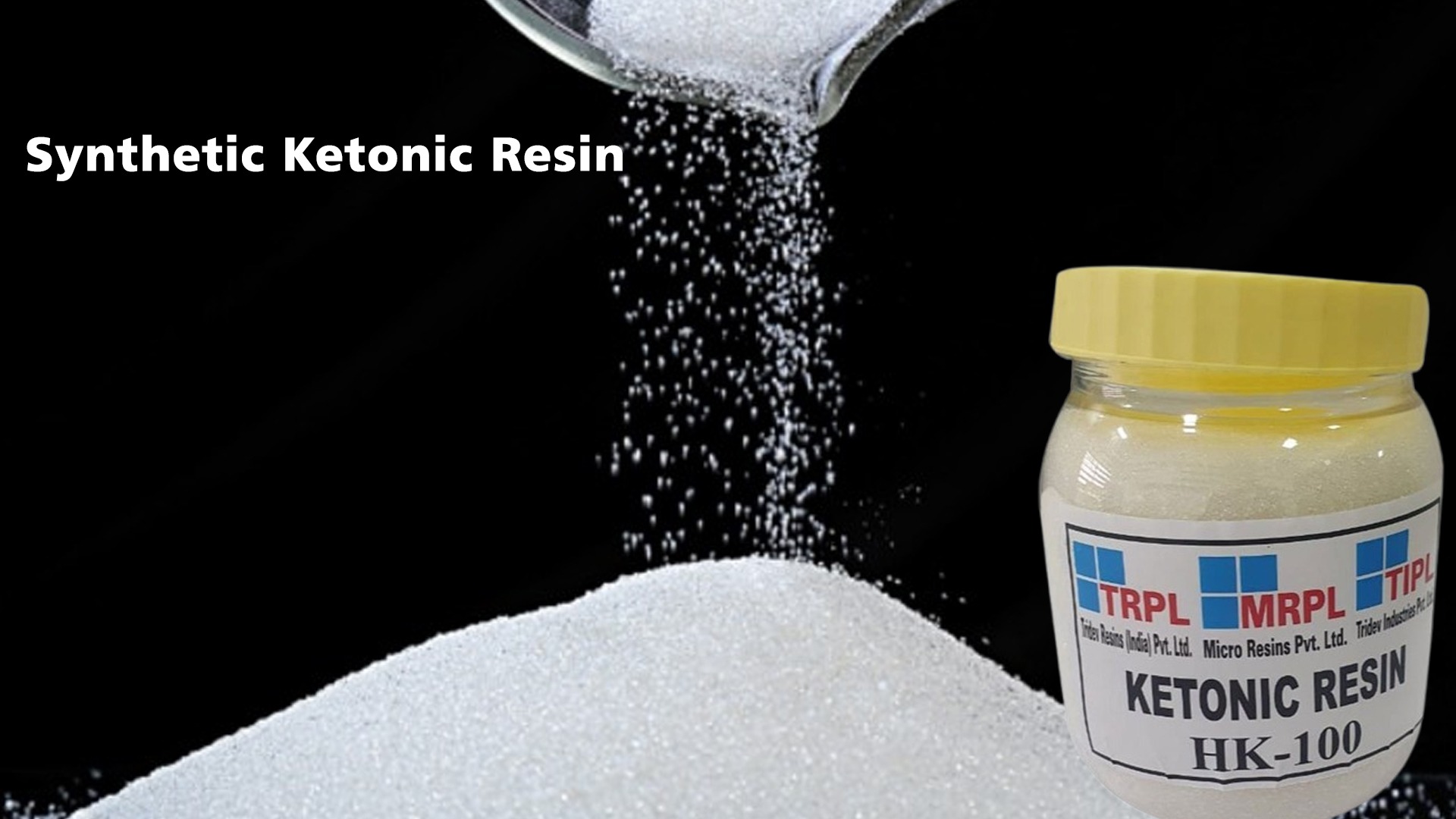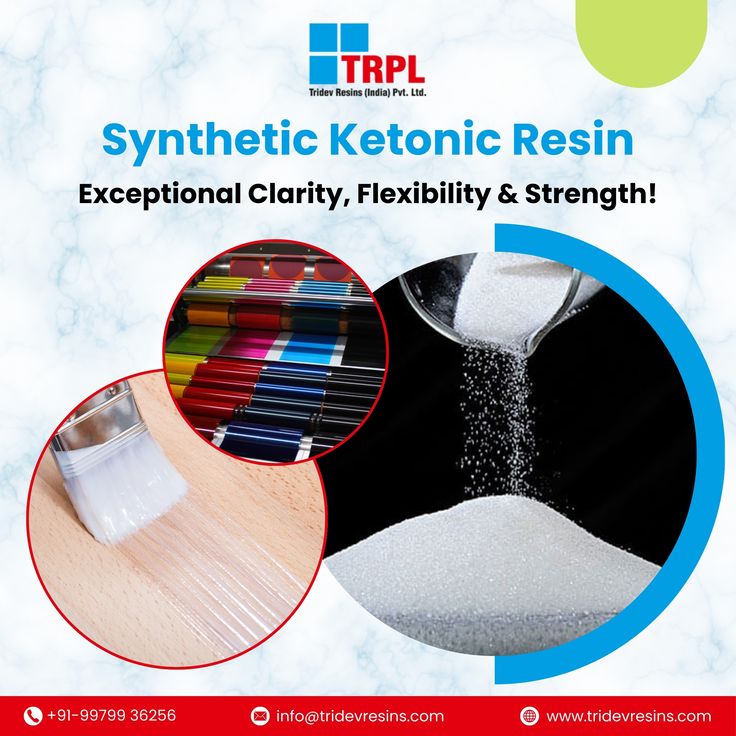
Resins play a pivotal role in determining the quality and performance of industrial coatings. While traditional resins such as alkyds, epoxies and urethanes have been the staple for industrial coatings for years, a relatively newer resin type, ketonic resins, is gaining popularity due to its distinctive performance advantages.
In this article, we explore how ketonic resins compare to traditional options in terms of properties, applications and overall performance in various industrial sectors.

What are Ketonic Resins?
Ketonic resins are thermoplastic resins that are produced through the condensation of phenolic compounds with ketones. These resins are known for their excellent hardness, gloss retention and strong adhesion to a variety of surfaces. They are commonly used in coatings, varnishes and other applications where performance under challenging conditions is crucial.
Unlike other resins, ketonic resins offer superior resistance to weathering, abrasion and chemicals, making them ideal for use in environments exposed to harsh conditions such as industrial machinery and automotive components.
Traditional Resins in Industrial Coatings
Traditional resins like alkyd resins, epoxy resins and urethane resins have long been used in industrial coatings due to their proven performance and versatile application range.
- Alkyd resins are cost-effective, provide excellent adhesion and are commonly used in general-purpose coatings.
- Epoxy resins offer outstanding adhesion and chemical resistance, making them a go-to for protective coatings in industrial applications.
- Urethane resins are prized for their flexibility and abrasion resistance, making them well-suited for environments where physical wear is a concern.
Performance Comparison: Ketonic Resins vs. Traditional Resins
Durability and Resistance
- Ketonic Resins: Known for their superior hardness and abrasion resistance, ketonic resins excel in applications requiring long-lasting protection against weathering, chemicals and physical damage. They offer high chemical stability and maintain their structural integrity under extreme conditions.
- Traditional Resins: While alkyd resins provide good adhesion and durability, they tend to degrade faster when exposed to UV light or moisture. Epoxy resins are highly resistant to chemicals, but they often lack the flexibility and UV resistance that ketonic resins offer. Urethane resins are flexible and highly resistant to physical wear, but they may not perform as well in harsh weather conditions compared to ketonic resins.
Application and Versatility
- Ketonic Resins: These resins are highly versatile and can be used in a wide range of industrial applications. Ketonic resins are commonly applied to coatings for metal, wood, plastics and concrete. Their quick-drying properties make them ideal for high-efficiency production environments, allowing manufacturers to reduce time spent on curing and handling.
- Traditional Resins: Epoxy resins are ideal for applications that require strong bonding and chemical resistance, such as marine coatings and metal protection. Alkyd resins are more suitable for low-cost, general-purpose coatings, especially in wood finishing and indoor applications. Urethane resins, while highly flexible, are better suited for coatings that need to withstand abrasion and impacts, such as automotive finishes.
Drying Time and Curing Process
- Ketonic Resins: These resins typically offer faster drying times, which is beneficial in industries where speed is critical. This makes ketonic resins particularly valuable in high-volume production environments.
- Traditional Resins: Alkyd resins generally have slower drying times, which may be seen as a disadvantage in fast-paced environments. Epoxy resins require curing agents and often necessitate a more complex curing process. Urethane resins, while durable, may also require extended drying times, making them less efficient in rapid production cycles.
Cost Considerations
- Ketonic Resins: Generally, ketonic resins are more expensive compared to alkyd resins, due to the higher cost of raw materials and their enhanced performance. However, the long-term durability and reduced need for maintenance or touch-ups make them a cost-effective choice in the long run for certain high-performance applications.
- Traditional Resins: Alkyd resins are among the most affordable options, which makes them ideal for budget-conscious projects. Epoxy resins and urethane resins tend to be more expensive, but their specialized performance in certain applications can justify the higher price point, especially in demanding industrial settings.

Key Applications: Where Ketonic Resins Shine
Protective Coatings for Industrial Equipment
- Ketonic Resins: These resins are commonly used in protective coatings for industrial equipment, including machinery, pipes and tanks. They offer robust resistance to wear and corrosion, ensuring long-lasting protection for high-value equipment.
- Traditional Resins: Epoxy resins are often the first choice for protective coatings in harsh industrial environments due to their chemical resistance. However, they may not provide the same level of abrasion resistance and UV stability that ketonic resins offer, particularly in exterior applications.
Automotive Coatings
- Ketonic Resins: Ketonic resins are used in automotive coatings due to their ability to maintain a high gloss finish and provide superior protection against scratches and weathering. Their fast-drying properties make them ideal for high-efficiency manufacturing processes in the automotive industry.
- Traditional Resins: Urethane resins are often preferred for automotive finishes, as they offer superior impact resistance and flexibility. Epoxy resins are commonly used in automotive primers due to their excellent adhesion to metal surfaces but are less suitable for topcoats due to their susceptibility to UV degradation.
Coatings for Exterior Applications
- Ketonic Resins: Exterior coatings benefit from the use of ketonic resins because of their ability to withstand harsh environmental conditions, including UV exposure, rain and temperature fluctuations. These resins ensure that the coating remains durable and retains its color over time.
- Traditional Resins: Alkyd resins are widely used in exterior paints for buildings and structures, but they tend to degrade under prolonged UV exposure, leading to fading and cracking. Epoxy resins, while suitable for metal surfaces, are not typically used for outdoor applications due to their limited UV resistance.

Conclusion:
When choosing between ketonic resins and traditional resins, the decision largely depends on the specific requirements of the application. Ketonic resins offer superior durability, quick drying times and excellent resistance to abrasion, weathering and chemicals, making them ideal for high-performance coatings in harsh environments. They are especially well-suited for protective coatings in the automotive industry, industrial machinery and outdoor applications.
On the other hand, traditional resins like alkyd, epoxy and urethane resins each have their place in industries where cost-effectiveness, flexibility and specific performance characteristics are required. Epoxy resins continue to be the go-to option for chemical resistance and adhesion, while urethane resins remain essential for coatings that require flexibility and impact resistance.
Ultimately, the choice between ketonic resins and traditional resins will depend on factors such as the specific application, environmental conditions, cost considerations and the desired performance.
- Ketonic Resins vs. Traditional Resins in Industrial Coatings: Comparative Analysis
- Applications of Acrylic Emulsions across Residential, Industrial and Commercial Projects
- Role of Rosin Modified Phenolic Resins in Brazil and Mexico’s Industries
- Phenolic Resin in South Africa and Egypt: A Comparative Market and Supply Chain Analysis
- Titanium Acetylacetonate in Asian Catalysis: Driving Innovations in Petrochemicals and Green Chemistry



